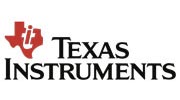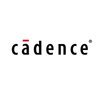Filter interviews by
Qualcomm Interview Questions and Answers for Freshers
52 Interview questions
The Nyquist criterion states that in order to accurately sample a signal, the sampling rate must be at least twice the highest frequency component of the signal.
The Nyquist criterion is used in digital signal processing and communication systems.
It ensures that the original signal can be accurately reconstructed from its samples.
The sampling rate should be at least twice the bandwidth of the signal to avoid aliasi...
Interpolation in discrete-time domain involves estimating values between known data points.
Interpolation is used to fill in missing data or estimate values between known data points.
Common interpolation techniques include linear interpolation, polynomial interpolation, and spline interpolation.
Linear interpolation calculates values along a straight line between two known data points.
Polynomial interpolation uses a...
The in-phase and quadrature components of a real pass-band signal can be obtained using a complex mixer.
A complex mixer is used to convert the real pass-band signal to a complex baseband signal.
The in-phase component is obtained by multiplying the pass-band signal with a local oscillator signal in-phase with the carrier frequency.
The quadrature component is obtained by multiplying the pass-band signal with a local...
The bit-rate for quantization of a band-limited signal can be obtained by considering the Nyquist-Shannon sampling theorem.
The Nyquist-Shannon sampling theorem states that in order to accurately represent a band-limited signal, the sampling rate must be at least twice the highest frequency component of the signal.
The bit-rate for quantization is determined by the number of bits used to represent each sample. It is...
What people are saying about Qualcomm






Overlap-add is implemented by dividing the input signal into overlapping segments, applying a window function, and adding the segments together.
Overlap-add is a method used in digital signal processing to efficiently convolve long signals with finite impulse response (FIR) filters.
The input signal is divided into overlapping segments, typically with a length equal to the filter length.
A window function, such as th...
Demodulating a QAM signal involves separating the amplitude and phase components to recover the original data.
QAM signals combine amplitude and phase modulation
Demodulation involves separating the amplitude and phase components
Techniques like coherent demodulation and quadrature demodulation are used
Coherent demodulation uses a local oscillator to recover the phase component
Quadrature demodulation separates the in...
Call by value passes a copy of the value while call by reference passes a reference to the value.
Call by value creates a new copy of the value being passed, while call by reference passes a reference to the original value.
In call by value, changes made to the parameter inside the function do not affect the original value, while in call by reference, changes made to the parameter inside the function affect the orig...
An LTI system is a linear time-invariant system that produces an output signal from an input signal.
LTI systems have constant parameters that do not change over time
The output of an LTI system is a linear combination of the input signal and the system's impulse response
Examples of LTI systems include electronic filters, audio equalizers, and control systems
The impulse response of a system can be found by applying a short impulse input and measuring the output.
Apply a short impulse input to the system
Measure the output of the system
Take the Fourier transform of the input and output signals
Divide the output Fourier transform by the input Fourier transform to get the transfer function
Take the inverse Fourier transform of the transfer function to get the impulse respons...
Homography is a transformation that maps points in one image to corresponding points in another image.
Homography is a 3x3 matrix that represents a planar perspective transformation.
It is used in computer vision to align images, stitch panoramas, and perform image registration.
Homography can be estimated using feature matching techniques like SIFT or SURF.
It assumes a projective transformation between two images.
Ex...
Qualcomm Interview Experiences for Freshers
53 interviews found
Linkedlist questions
(2 Questions)
- Q1. Depth Os and C
- Q2. Multi threading and semaphores
I appeared for an interview in Mar 2025, where I was asked the following questions.
- Q1. What are the different types of LAN (Local Area Network)?
- Ans.
LAN types include wired, wireless, and hybrid networks, each serving different connectivity needs and environments.
Wired LAN: Uses Ethernet cables for connections; common in offices.
Wireless LAN (WLAN): Utilizes Wi-Fi technology; ideal for mobile devices.
Virtual LAN (VLAN): Segments networks logically; enhances security and performance.
Storage Area Network (SAN): Connects storage devices; used in data centers.
Home Area...
- Q2. Which smartphones utilize Snapdragon processors?
- Ans.
Snapdragon processors are widely used in various smartphones from multiple brands, enhancing performance and efficiency.
Samsung Galaxy S series (e.g., Galaxy S21, S22)
OnePlus devices (e.g., OnePlus 9, OnePlus 10)
Xiaomi smartphones (e.g., Mi 11, Mi 12)
Google Pixel phones (e.g., Pixel 5, Pixel 6)
LG smartphones (e.g., LG V60, LG G8)
I applied via Referral and was interviewed in Dec 2023. There were 3 interview rounds.
(1 Question)
- Q1. What is modulation, and what are the different types of modulation schemes.
- Ans.
Modulation is the process of varying a carrier signal to transmit information. Different types include AM, FM, PM, and QAM.
Modulation is used to transfer information by varying a high-frequency carrier signal.
Amplitude Modulation (AM) varies the amplitude of the carrier signal to encode information.
Frequency Modulation (FM) varies the frequency of the carrier signal to encode information.
Phase Modulation (PM) varies th...
(3 Questions)
- Q1. What is S-matrix?
- Ans.
S-matrix is a mathematical representation used in RF engineering to describe the relationship between input and output signals of a linear system.
S-matrix is also known as scattering matrix.
It is used to analyze the behavior of RF circuits and systems.
S-matrix elements represent the complex amplitudes of the incident and reflected waves at each port of a network.
S11 parameter represents the reflection coefficient at po...
- Q2. Where can you different types analog modulation schemes?
- Ans.
Different types of analog modulation schemes can be found in various communication systems.
Analog modulation schemes are used in radio broadcasting, television transmission, and wireless communication.
Some common types of analog modulation schemes include amplitude modulation (AM), frequency modulation (FM), and phase modulation (PM).
AM is used in AM radio broadcasting, where the amplitude of the carrier signal is vari...
- Q3. What is VSWR and what is the need for it?
- Ans.
VSWR stands for Voltage Standing Wave Ratio. It is a measure of how well a transmission line is matched to the impedance of the connected devices.
VSWR is a ratio of the maximum voltage to the minimum voltage along a transmission line.
It is used to measure the efficiency of power transfer and the impedance matching in RF systems.
A lower VSWR indicates better impedance matching and less power loss.
VSWR is important in RF...
(4 Questions)
- Q1. What is a standing wave in a transmission line?
- Ans.
A standing wave in a transmission line is a wave that appears to be stationary, resulting from the interference of two waves traveling in opposite directions.
A standing wave is formed when a wave traveling in one direction reflects back upon encountering an impedance mismatch in the transmission line.
The interference between the incident and reflected waves creates regions of constructive and destructive interference, ...
- Q2. Draw waveforms of Amplitude and FM/PM modulation scheme?
- Ans.
Amplitude modulation (AM) and frequency modulation (FM) waveforms can be represented graphically.
AM modulation: The amplitude of the carrier signal is varied in proportion to the amplitude of the modulating signal.
FM modulation: The frequency of the carrier signal is varied in proportion to the amplitude of the modulating signal.
Waveforms can be drawn to show the variations in amplitude or frequency over time.
AM wavefo...
- Q3. What is the propagation delay in Electromagnetic wave?
- Ans.
Propagation delay is the time it takes for an electromagnetic wave to travel from one point to another.
Propagation delay is determined by the distance between the two points and the speed of light.
It is the time it takes for the wave to propagate through a medium or free space.
Propagation delay can be calculated using the formula: delay = distance / speed of light.
For example, if the distance between two points is 100 ...
- Q4. Draw Transmitter and Receiver for a communication system.
- Ans.
A transmitter and receiver are essential components of a communication system.
Transmitter converts information into a suitable form for transmission.
Receiver receives the transmitted signal and converts it back into the original form.
Transmitter typically includes a modulator, power amplifier, and antenna.
Receiver typically includes an antenna, demodulator, and audio or video output.
Example: In a radio communication sy...
Interview Preparation Tips
- Communication Systems
- Transmission Line
- Signals and Systems
First Round was to judge engineering aptitude, i was asked general things and about my project. The interviewer was was very nice and friendly. A good experience overall.
Second round was a technical round questions from my projects and subjects like EMT and Communication systems was asked in great details. Friendly Interviewer, even though it was an interview I learnt a great deal. Again a very good experience.
Third Round was manager round. Again a technical round. Question asked from EMT and communication systems. The interviewer was not friendly at all, I felt like I was sitting in a college viva. The interviewer started every question with "Do you have any Idea about--" which I felt was berating and rude at least. While explaining things the interviewer interrupted me again and again and kept asking questions related to it which intimidated me. In the previous rounds of interview if I answered incorrectly or partially correctly the interviewer would ask me to rethink and give me sometime for the same. Here the interviewer would answer with "hmmm" again and again and move to the next question. Overall questions asked were from complete basics but I didn't have a good interview experience at all.
Reading previous interview experience for freshers, I was told I'd be asked for my preferred subject but that was not the case so an interviewee should be prepared for the worst.
(3 Questions)
- Q1. What is your work experience?
- Q2. What is your experience with Java Programming?
- Q3. Explain your Masters Project
(2 Questions)
- Q1. Idk idk idk idk
- Q2. Idk idk idk idk ok
Interview Preparation Tips
Skills evaluated in this interview
I applied via Internshala and was interviewed in Mar 2024. There was 1 interview round.
(2 Questions)
- Q1. Tell me about yourself
- Ans.
I am a passionate Design Engineer with a strong background in mechanical design and a knack for innovative problem-solving.
Graduated with a degree in Mechanical Engineering from XYZ University, where I developed a solid foundation in design principles.
Worked at ABC Company, where I led a team to redesign a product that improved efficiency by 30%.
Skilled in CAD software like SolidWorks and AutoCAD, having completed seve...
- Q2. Questions based on experience and projects
(2 Questions)
- Q1. Basic bitwise question
- Q2. Basic c question
(1 Question)
- Q1. Basic os questions
I applied via Referral and was interviewed in Jun 2024. There was 1 interview round.
Platform was hackerrank. very connected to the basics of ml.
Interview Preparation Tips
I applied via Approached by Company and was interviewed in Jan 2024. There was 1 interview round.
(2 Questions)
- Q1. Mostly questions on Java 8 features, Spring basics some basic live examples
- Q2. Steam operations of student objects
- Ans.
Using Java Stream operations to manipulate student objects
Use Stream API to perform operations on a collection of student objects
Apply filter, map, reduce, and other stream operations to transform and manipulate data
Use lambda expressions to define the operations to be performed on each student object
Example: filtering students based on a certain criteria, mapping student names to uppercase, calculating the average gra...
Skills evaluated in this interview
I applied via Campus Placement and was interviewed in Jul 2023. There were 2 interview rounds.
Logical, Quant and English questions. C based theory questions, and digital electronics.
(3 Questions)
- Q1. Project related questions, SRAM, DRAM device based questions.
- Q2. CMOS based questions to determine the drain voltage of a transistor.
- Q3. Question about read cycle timing graphs in AHB.
- Ans.
Read cycle timing graphs in AHB illustrate the timing relationships between signals during data read operations.
AHB (Advanced High-performance Bus) is a high-speed bus protocol used in microcontrollers.
Read cycle timing involves signals like HCLK, HADDR, HWRITE, and HTRANS.
For example, HTRANS indicates the type of transfer (IDLE, BUSY, NONSEQ, SEQ).
Timing graphs show the relationship between address setup, data valid, ...
Interview Preparation Tips
I appeared for an interview before May 2024, where I was asked the following questions.
- Q1. Bit manupulation
- Q2. Projects done in previous company
- Ans.
Led multiple engineering projects focusing on automation, efficiency, and innovative solutions in my previous company.
Developed an automated testing framework that reduced testing time by 30%.
Implemented a new data management system that improved data retrieval speed by 50%.
Collaborated with cross-functional teams to design a new product line, resulting in a 20% increase in market share.
Optimized existing manufacturing...
Qualcomm Interview FAQs
Some of the top questions asked at the Qualcomm interview for freshers -
The duration of Qualcomm interview process can vary, but typically it takes about less than 2 weeks to complete.
Tell us how to improve this page.
Qualcomm Interviews By Designations
- Qualcomm Software Engineer Interview Questions
- Qualcomm Associate Engineer Interview Questions
- Qualcomm Engineer Interview Questions
- Qualcomm Senior Engineer Interview Questions
- Qualcomm Software Developer Interview Questions
- Qualcomm Hardware Engineer Interview Questions
- Qualcomm Senior Software Engineer Interview Questions
- Qualcomm Intern Interview Questions
- Show more
Interview Questions for Popular Designations
- Software Engineer Interview Questions
- Associate Engineer Interview Questions
- Engineer Interview Questions
- Senior Engineer Interview Questions
- Software Developer Interview Questions
- Hardware Engineer Interview Questions
- Senior Software Engineer Interview Questions
- Intern Interview Questions
- Show more
Overall Interview Experience Rating
based on 24 interview experiences
Difficulty level
Duration
Interview Questions from Similar Companies
Qualcomm Reviews and Ratings
based on 1.1k reviews
Rating in categories
7-14 Yrs
Not Disclosed
11-14 Yrs
Not Disclosed
|
Senior Engineer
1.5k
salaries
| ₹22 L/yr - ₹40 L/yr |
|
Software Engineer
1.1k
salaries
| ₹16.9 L/yr - ₹30 L/yr |
|
Engineer
919
salaries
| ₹16.7 L/yr - ₹30 L/yr |
|
Senior Software Engineer
754
salaries
| ₹24.9 L/yr - ₹46 L/yr |
|
Senior Leader Engineer
509
salaries
| ₹34.2 L/yr - ₹60 L/yr |

Nvidia

Intel

Mercedes-Benz Research and Development India

Tata Electronics
- Home >
- Interviews >
- Qualcomm Interview Questions >
- Qualcomm Interview Questions for Fresher















